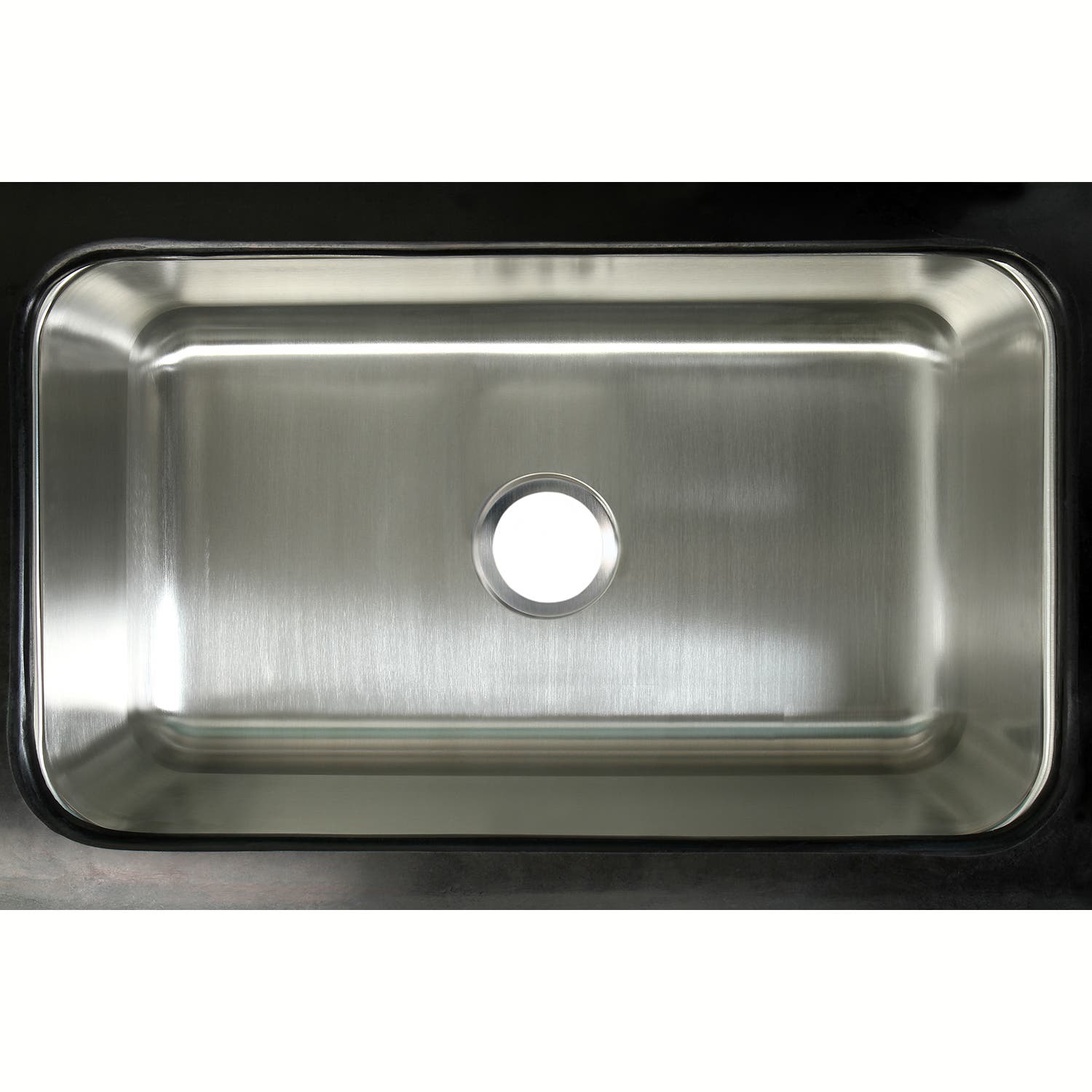Get PRO Pricing
Get [PRO] Pricing

The kitchen sink is arguably the most used and abused fixtures in your home. With that, selecting the right stainless steel sink is a decision that shouldn’t be taken lightly.
If you’ve decided to buy a stainless steel sink, you are on the right track. Stainless steel is by far the most durable and easy-to-maintain material available for kitchen sinks.
That doesn’t mean it’s for everything. But like everything, kitchen sinks has its drawbacks. The surface can scratch, water spots can appear, and it tends to be a little noisier. But with regular care and maintenance, all of those issues can be minimized.
THE RIGHT SINK FOR YOUR COUNTERTOP
Depending on your type of countertop, you may be limited to a specific type of sink. For example, if you installed a solid surface countertop, you have the option of selecting a drop-in, also known as a self-rimming sink or an undermount sink.
However, if you installed a Formica top, you will be limited to self-rimming sinks. This narrows your options since there are not many choices available for self-rimming sinks.
CHOOSING THE RIGHT GAUGE
Stainless steel sinks come in different thicknesses ranging from 24-gauge to 16-gauge. 16-gauge is classified as the thickest stainless steel for residential sinks.
If you choose to purchase an undermount sink, selecting the right gauge becomes of utmost importance since replacing an undermount sink is an expensive and time-consuming proposition.
However, a thicker gauge will make a difference in how much it can tolerate wear-and-tear. It also makes a difference in how the sink sounds.
If you are looking for a self-rimming sink for a rental unit, a 22-gauge will be appropriate for that type of installation.
The price difference between the different gauges grows higher as the numbers go lower.
In the last three years, the 16-gauge has been used as a marketing ploy by importers. In reality, an actual 18-gauge sink will be sufficient for residential use.
Some manufacturers will use 18-gauge material on the deck and a lesser gauge on the bowl. Most 18-gauges use a three-piece construction process. Each bowl is punched from one piece of stainless steel and the deck from a separate piece.
Sinks are punched using presses exerting thousands of pounds of pressure. The presses will have to stretch the metal far enough to form a bowl out of a flat piece of stainless steel. The stretching process will make for a thinner final gauge.
SOUND ATTENUATING SYSTEM
Another essential component in the construction of a stainless steel sink is the sound attenuating system.
There are two types of sound attenuating systems used by sink manufacturers: (1) Sound deadening pads and (2) sound deadening spray coatings.
By comparison, the two are similar, and no type is better than the other. The sound deadening pads generally cover the bottom surface of the sink and in some cases, the sides. However, some still leave blank spots.
On the other hand, the sound-deadening spray coatings cover all surfaces. Although it is not as effective as the pads, it dramatically reduces sound. There are a few brands that will play it safe and combine both methods.
LAYOUT AND DISTRIBUTION
After selecting the gauge and type of sound attenuation system, we need to consider the actual layout and distribution for the sink.
Historically, a two-bowl configuration has been the most widely used type of sink. With that configuration, there are more choices to be made as far as the proportion of each bowl. The most common is the 50/50 configuration.
However, because cooking styles vary, some people prefer a 60/40, 70/30, or even an 80/20 configuration.
There is no right or wrong answer, and it becomes more a matter of personal preference.
As lifestyles change, people depend more on dishwashers. The single bowl sink has become very popular because it allows you to wash large pots, pans, even a baking sheet. Aesthetically, we have gone from standard bowl to D-shaped bowl, to zero radius sinks.
FARMHOUSE SINKS
Farmhouse sinks were popular in England and France back in the latter 19th-20th Century.
The farmhouse sink is exposed on the front, better known as the apron front sink. The sink is a little challenging to install, as it requires special preparation of the cabinet. It is the type of decor that will evoke a country feel delivering a home-style charm.
In conclusion, selecting a stainless steel sink requires much thought and planning. It is recommended to ask questions, but importantly, assess what aesthetic values and functional qualities are essential to you. Try to combine both of these parameters to find the perfect sink for you and your home.
